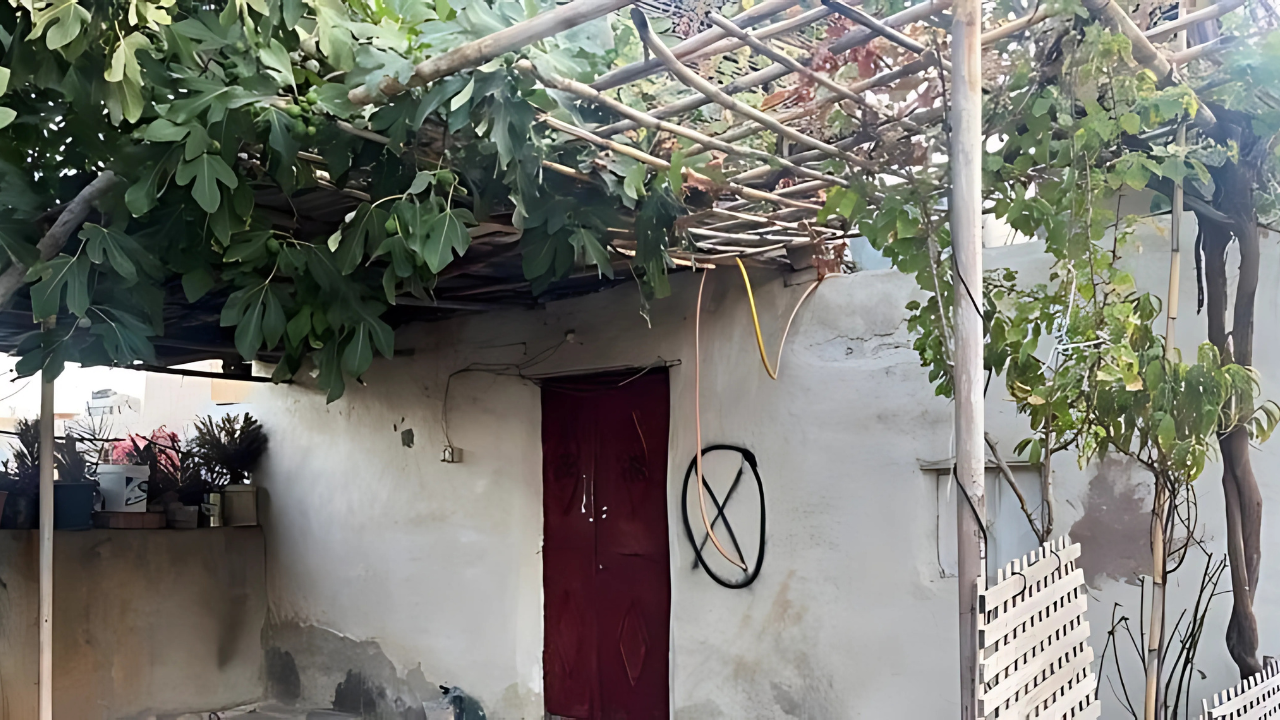
Post by : Shivana Rahim
In late August 2025, Syrian security forces launched a forceful operation in the Alawite suburb of Damascus known as Al-Somaria. Armed with guns, swords, and eviction notices, the forces stormed the neighborhood, marking homes with bold black symbols—X or O—to signal who could remain and who must leave. This highly tense and controversial move centered around eviction orders, property rights issues, and sectarian tensions deeply rooted in Syria’s complex history under the Assad regime.
Al-Somaria is a rundown suburb largely inhabited by families of former soldiers loyal to Bashar al-Assad, who belongs to the Alawite minority. For over five decades, the Assad family ruled Syria with a grip that favored Alawites—granting them property and key political positions while suppressing dissent, mainly from the majority Sunni Muslim population. This legacy created intense sectarian divides, and neighborhoods like Al-Somaria became strongholds for Assad loyalists. The suburb itself was originally seized and renamed by Rifa al-Assad in the 1970s, reshaping the area into an Alawite buffer zone that secured Assad’s power base.
From August 27 to 29, dozens of security personnel, under command figures such as Abu Hudhayfah, went door to door. They demanded residents prove land ownership amidst claims that many were illegally occupying property seized during the Assad era. Those without acceptable documentation found their homes marked with an “O” and faced eviction orders demanding they vacate within 48 hours or face legal consequences. Others received an “X,” which meant they could remain, but the markings and accompanying disruption caused widespread panic.
This operation has highlighted the property dispute conflicts that have long plagued Syria. Many residents felt unfairly targeted, with some providing ownership papers dismissed as invalid because they originated from now-outdated Assad-era records. The presence of both marks on some homes and eviction notices affixed even to “X”-marked properties added to the confusion and fear.
Before the eviction raids, around 22,000 people lived in Al-Somaria, nearly half of whom were former soldiers. Within a week of the operation, only about 3,000 residents remained as many fled fearing violence similar to what had earlier hit other Alawite coastal areas. Reports also emerged of men being interrogated about military service and others detained and beaten in a police-station-turned-residential building. One local committee member, Barak, who is a lawyer, described experiencing physical abuse firsthand.
Human rights experts have sharply criticized the evictions, labeling them forced displacements and severe human rights violations. These actions scatter communities, leave families homeless, and exacerbate sectarian tensions precisely when Syria is struggling with governance and security after Assad’s fall in December 2024.
The current administration, which rose following Assad’s ouster, faces the enormous challenge of addressing deep-rooted problems tied to property ownership, expropriation, and sectarian favoritism inherited from the old regime. Governor Maher Marwan acknowledged lingering injustices and promised legal committees to examine decades of informal housing and corruption, although no concrete transparent measures were reported.
Al-Somaria is now essentially a symbol of the broader conflict spanning Syria’s transition—between calls to restore justice for displaced populations and pressures from former loyalists who benefited from Assad’s policies. This dynamic complicates urban redevelopment plans, including major projects like a $2 billion metro line in Damascus slated to pass through Al-Somaria.
Experts and civil society organizations argue any solution must balance infrastructural development with respect for human rights and community integrity. Forced evictions conducted without due process risk entrenching grievances and jeopardizing reconciliation efforts. The new government must navigate rebuilding surface-level stability while addressing the sectarian roots of land conflict in Alawite and other communities.
Al-Somaria’s recent upheaval serves as a stark example of how property disputes, governmental authority, and sectarian identity intertwine in post-conflict Syria, influencing the future social and political landscape.
This detailed analysis offers a human-centered understanding of how Syrian forces’ evacuation of an Alawite suburb represents larger challenges of justice, displacement, and reconstruction in Syria’s fraught transition period.










Curry Powers Warriors to Nail-Biting 109-108 Victory Against Spurs
Stephen Curry's 49 points propel the Warriors to a dramatic 109-108 NBA Cup triumph over the Spurs,

India Advances to Semi-Finals After Thrashing USA in Women’s Blind T20 World Cup
India secured a dominant ten-wicket victory over the USA, advancing to the semi-finals in the Women’

South Africa's Early Advantage as India Struggles on Day Two
On Day Two, India reached 138-4 as South Africa took three early wickets, complicating matters with

Kenta Nishimoto Defeats Lakshya Sen in Japan Masters Semifinal
Lakshya Sen's journey in the Japan Masters ends after losing to Kenta Nishimoto 19-21, 21-14, 12-21

Kenta Nishimoto Defeats Lakshya Sen in Japan Masters Semifinals
Lakshya Sen's run at the Japan Masters concludes with a loss to Kenta Nishimoto in the semifinals, 1

Major IPL Trade: Jadeja Joins Royals as CSK Signs Samson
In a significant IPL trade, CSK has acquired Sanju Samson from Rajasthan Royals in exchange for Ravi